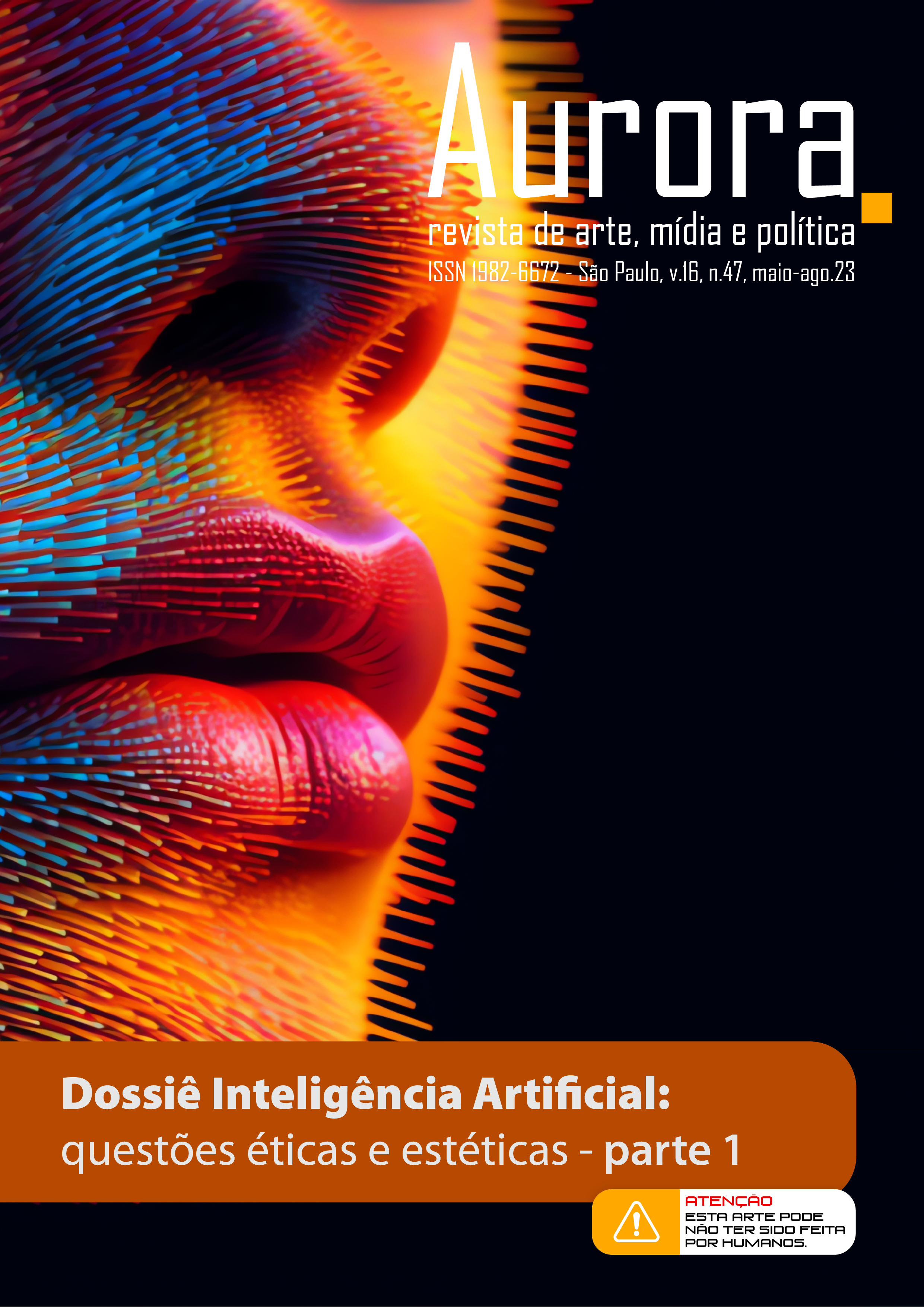From image reproduction to algorithmic fissures
biases, deviations and other fields of possible
Keywords:
Artificial intelligence, Cybernetics, Immersive exhibitions, Contemporary artAbstract
The use of Artificial Intelligence has grown considerably in several areas. However, this type of technology is not neutral and can enhance biases already present in databases or point out correlations where there are only coincidences, as it engenders a specific mode of knowledge based on identifying patterns and statistical probability. In this scenario, abuses of various types have been recurrent in their use, as have efforts to report them. Given this, would it be possible to search for other forms of relationship with technology based on the study of contemporary artistic practices? A relationship that does not aim to close the world in on itself, seeking to enclose its multiplicities in a game of correlations and probabilities, but to expand it? This work seeks to analyze some ways in which contemporary art has made use of Artificial Intelligence technologies, observing how different modes of operation relate to highlight, question or produce realities.
References
AGÜERA Y ARCAS, Blaise. Art in the age of machine intelligence. In.: VICKERS, Ben; ALLADO-MCDOWELL, K. (Orgs.). Atlas of Anomalous AI. Ignota, 2020, p. 112-120.
BAUDRILLARD, Jean. O efeito Beaubourg. In: Simulacros e simulação. Tradução de Maria João da Costa Pereira. Lisboa: Relógio d’Água, 1991.
BEIGUELMAN, Giselle. Botannica Tirannica: da genealogia do preconceito às possibilidades de um ecossistema errante. Revista ClimaCom – Políticas vegetais [Online], Campinas, ano 9, n. 23, dez. 2022. Disponível em: <http://climacom.mudancasclimaticas.net.br/botannica-tirannica>. Acesso em: 15 jun. 2023.
CRAWFORD, Kate; PAGLEN, Trevor. Excavating AI: The Politics of Images in Machine Learning Training Sets. In. Stages, Liverpool, v. 9, March 2021. Disponível em: <https://www.biennial.com/journal/issue-9/excavating-ai-the-politics-of-images-in-machine-learning-training-sets>. Acesso em: 15 set. 2021.
DELEUZE, Gilles. Post-Scriptum sobre as sociedades de controle. In. Conversações. Tradução de Peter Pál Pelbart. São Paulo: Editora 34, 1992.
HARAWAY, Donna. Saberes localizados: a questão da ciência para o feminismo e o privilégio da perspectiva parcial. Cadernos Pagu, Campinas, n. 5, p. 7-41, 1995. Disponível em: <https://periodicos.sbu.unicamp.br/ojs/index.php/cadpagu/article/view/1773>. Acesso em: 18 dez. 2022.
INGOLD, Tim. Repensando o animado, reanimando o pensamento. Espaço Ameríndio, Porto Alegre, v. 7, n. 2, p. 10-25, jul./dez. 2013.
PASQUINELLI, Matteo; JOLER, Vladan. O Manifesto Nooscópio: Inteligência Artificial como Instrumento de Extrativismo do Conhecimento. Trad. Leandro Módolo e Thais Pimentel. KIM research group (Karlsruhe University of Arts and Design) e Share Lab (Novi Sad), 1 de Maio de 2020. Disponível em: <https://lavits.org/o-manifesto-nooscopio-inteligencia-artificial-como-instrumento-de-extrativismo-do-conhecimento/>. Acesso em: 18 dez. 2022.
PELBART, Peter Pál. O Avesso do Niilismo: Cartografias do esgotamento. São Paulo: N-1, 2013.
ROUVROY, Antoinette; BERNS, Thomas. Governamentalidade algorítmica e perspectivas de emancipação: o díspar como condição de individuação pela relação? In.: Revista ECO Pós, Rio de Janeiro, v. 18, n. 2, p. 36-56, 2015.
SANTOS, Laymert Garcia dos. A informação após a virada cibernética. In. SANTOS, Laymert Garcia dos; KUCINSKI, Bernardo; KEHL, Maria Rita; PINHEIRO, Walter. In: Revolução tecnológica, internet e socialismo. São Paulo: Editora Fundação Perseu Abramo, 2003.
_______________. Tecno-estética: repensando as relações entre arte e tecnologia. 18 mar. 2016. Disponível em: <https://www.laymert.com.br/tecno-estetica-repensando-as-relacoes-entre-arte-e-tecnologia/>. Acesso em: 15 jun. 2023.
ZUBOFF, Shoshana. Big Other: Capitalismo de vigilância e perspectivas para uma civilização de informação. Tradução de Antonio Holzmeister Oswaldo Cruz e Bruno Cardoso. In.: BRUNO, Fernanda; CARDOSO, Bruno; KANASHIRO, Marta; GUILHON, Luciana; MELGAÇO, Lucas (Orgs.). Tecnopolíticas da vigilância: perspectivas da margem. São Paulo: Boitempo, p. 17-68, 2018.
Downloads
Published
How to Cite
Issue
Section
License
Copyright (c) 2023 Aurora. Journal of Art, Media and Politics.

This work is licensed under a Creative Commons Attribution 4.0 International License.











